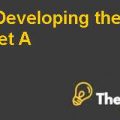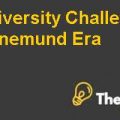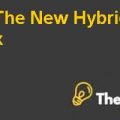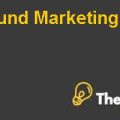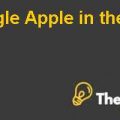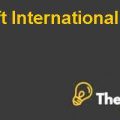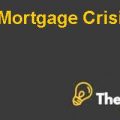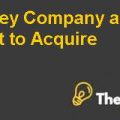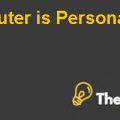Eddie Bauer Case Solution
Assumptions
The assumptions used in the projections, are given in the case study. Few assumptions are stated as follows:
- Sales revenue has increased by 1% in 2005, 5.4% in 2006, 7.5% in 2007 and 8% in 2008.
- The cost of goods sold is calculated as a percentage of sales revenue. In 2004, the COGS as sales percentage was 53.1%, which was expected to reach 53.3% in 2005 and then gradually decrease and becoming 52.1% by fiscal year 2008, as the company’s buying and occupancy costs are expected to become low.
- SG&A expenses are also taken as a sales percentage. In 2004, the percentage was 37.6% and it was expected to be 36.1% in 2005, 35.8% in 2006, 35.2% in 2007 and 34.3% in 2008. It is because the firm will be operating smaller new stores, ultimately reducing the SG&A costs.
- Depreciation and amortization expenses are expected to decrease by 10% in 2005, due to the disposal of few assets. For the fiscal years 2006-2008, the company’s depreciation and amortization are based on the remaining assets’ life, including the capital expenditures.
DCF Valuation
The DCF valuation method is used to calculate the share price of Eddie Bauer. First of all, the company’s cash flows are determined, whereby the company’s projected operating income is used tod determine the NOPAT, which is equal to the company’s operating income after subtracting the taxes. Afterwards, the depreciation and amortization is added back to the NOPAT, as these are non-cash expenses and necessary to determine the free cash flows to the firm.
In addition the net working capital is calculated from 2005-2008 by subtracting the projected current liabilities from the projected current assets. The changes in working capital are then subtracted from NOPAT. Lastly, the company’s capital expenditures are subtracted, which resulted in free cash flows to the firm for each year. A terminal value is calculated ta the fiscal year 2008, using the equation “TV = FCFF*(1+G) / WACC – G”.
Lastly, the cash flows are discounted using thegiven discount rate of 9.9%, which resulted in a firm’s value of $2,058,909.71. Lastly, the comp0any’ debt is subtracted from firm value and the divided by the number of outstanding shares, which resulted in the share price of Eddie Bauer being $60.15 (See Appendix 1).
Appendix 1: DCF Valuation
| Working Capital | |||||
| 2004 | 2005 | 2006 | 2007 | 2008 | |
| Current Assets | $223,904 | $291,952 | $362,882 | $460,831 | $543,491 |
| Current Liabilities | $149,214 | $140,193 | $134,481 | $138,780 | $146,981 |
| Working Capital | $74,690 | $151,759 | $228,401 | $322,051 | $396,510 |
| Change in WC | $77,069 | $76,642 | $93,650 | $74,459 | |
| DCF VALUATION | ||||
| 1 | 2 | 3 | 4 | |
| 2005 | 2006 | 2007 | 2008 | |
| EBIT | $90,644 | $110,909 | $132,982 | $157,074 |
| EBIT*(1-T) | $59,825 | $73,200 | $87,768 | $103,669 |
| Add: Depreciation & Amortization | $28,332 | $27,674 | $27,925 | $30,913 |
| Less: Change in Working Capital | $77,069 | $76,642 | $93,650 | $74,459 |
| Less: Capital Expenditures | -$49,065 | -$37,481 | -$39,376 | -$51,876 |
| FCFF | $60,153 | $61,713 | $61,419 | $111,999 |
| Terminal Value | $2,669,622 | |||
| Total Cash Flows | $60,153 | $61,713 | $61,419 | $2,781,621 |
| Discounted cash Flows | $54,734.34 | $51,095.29 | $46,271.17 | $1,906,808.91 |
| Firm Value | $2,058,909.71 | |||
| Less: Long Term Debt | $254,281.00 | |||
| Equity Value | $1,804,628.71 | |||
| Outstanding Shares | $30,000.00 | |||
| Intrinsic Value | $60.15 | |||
............................
This is just a sample partial case solution. Please place the order on the website to order your own originally done case solution.

